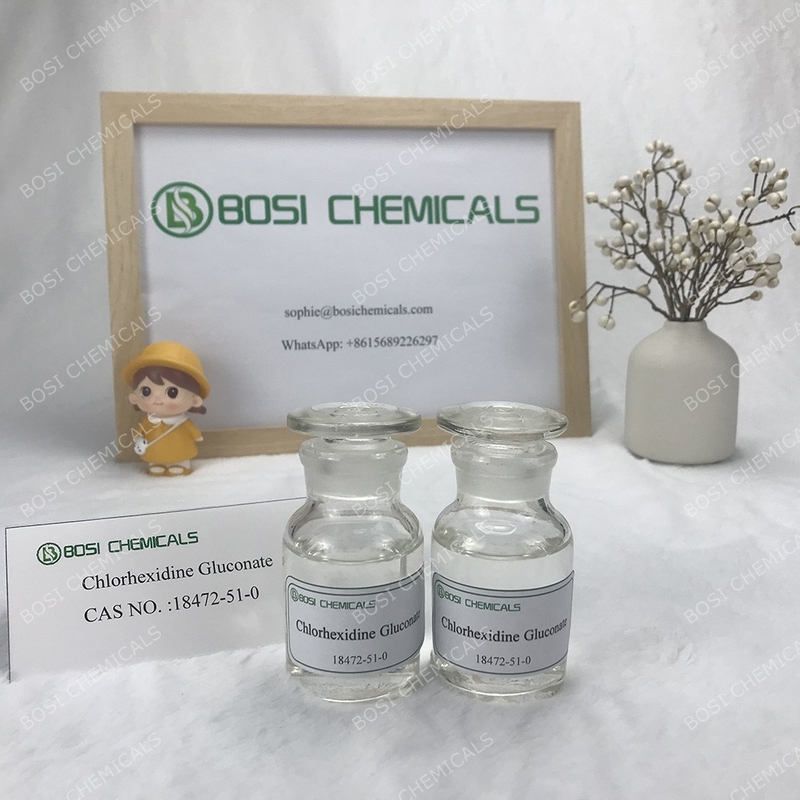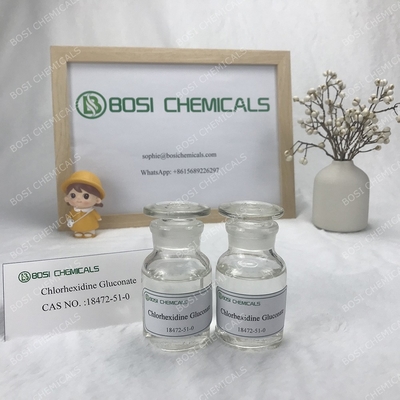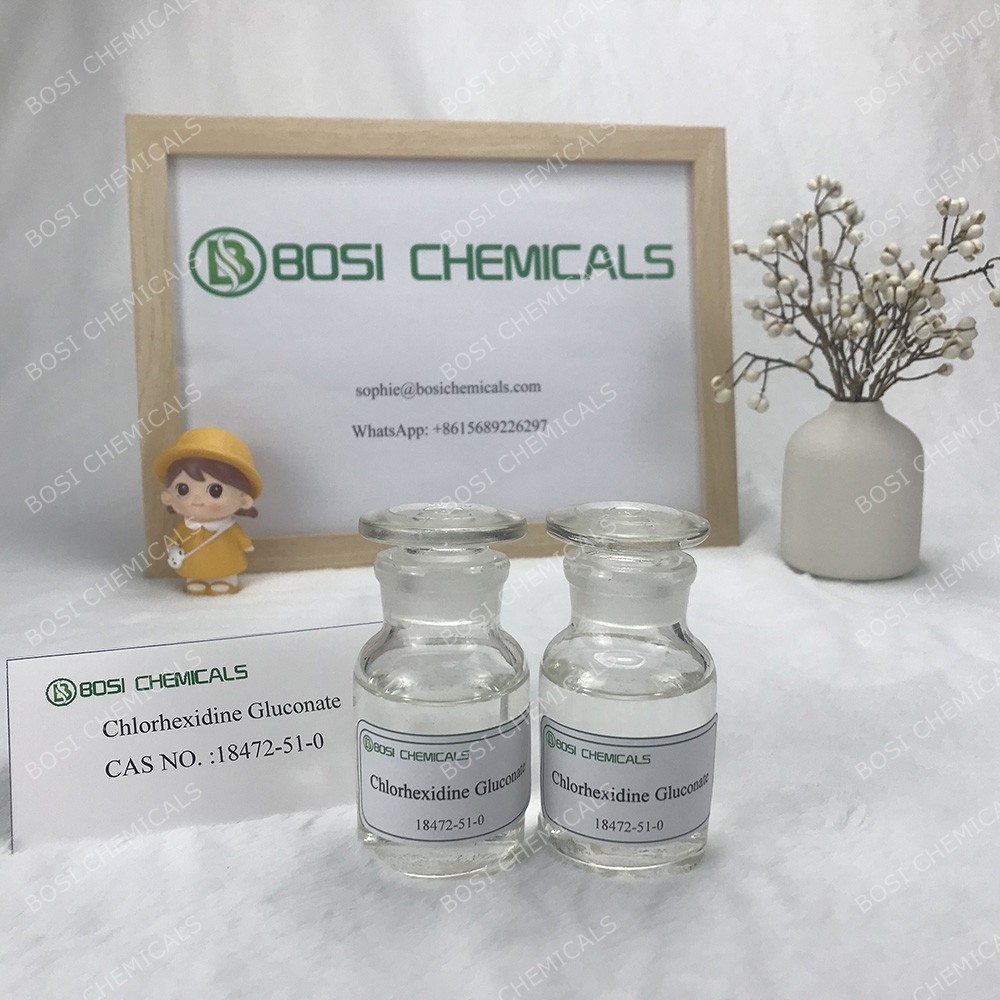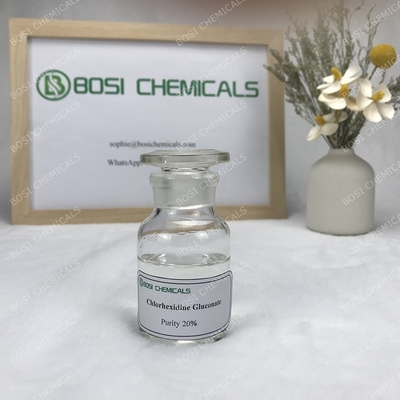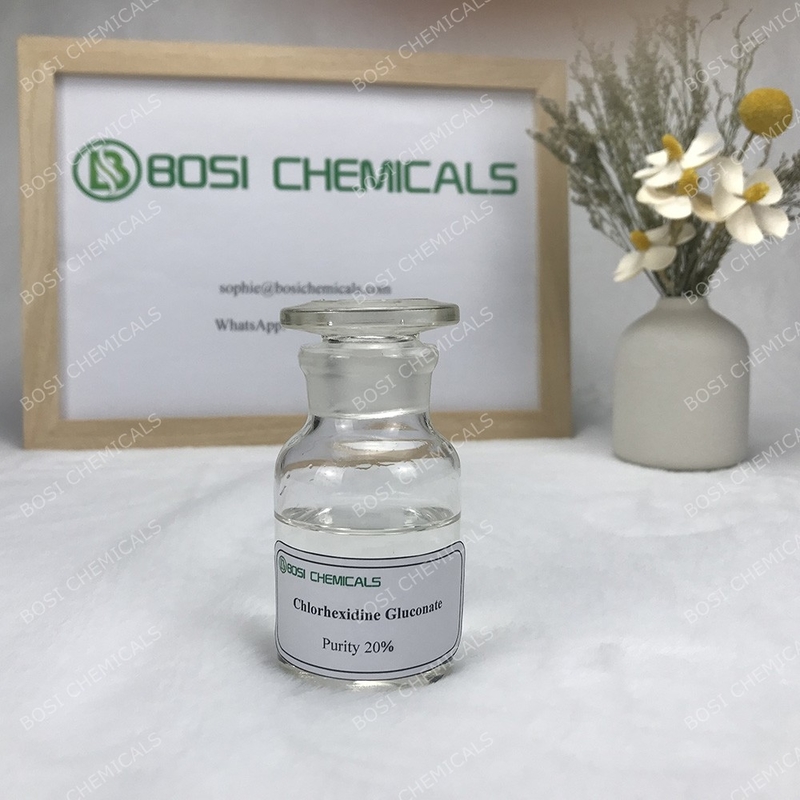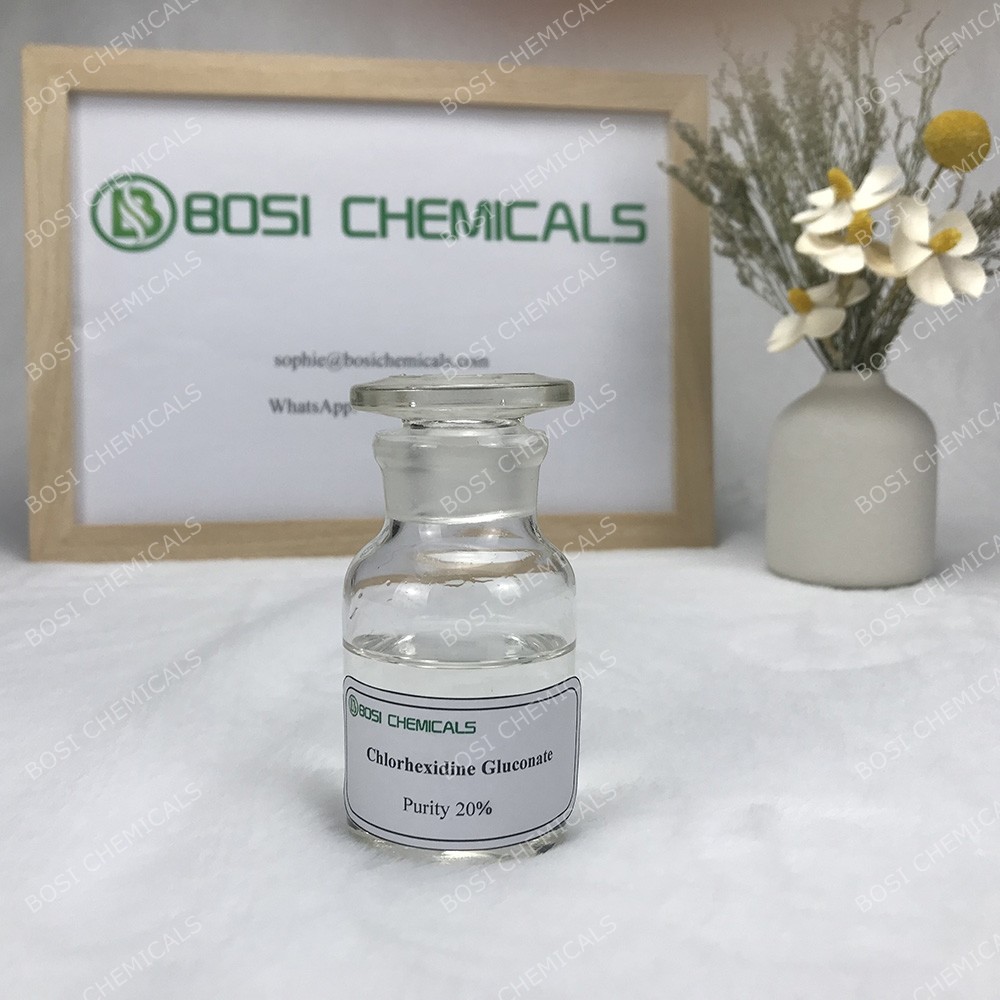Colorless Liquid Chlorhexidine Gluconate Liquid For Antiseptic
Chlorhexidine gluconate mainly has disinfection and antiseptic effects. Many pathogenic bacteria are sensitive to it, including Staphylococcus, Streptococcus mutans, Streptococcus salivarius, Candida albicans, Escherichia coli and anaerobic bacteria, such as anaerobic bacteria. Oxypropionic acid bacteria are highly sensitive to this drug. This drug has a certain antibacterial effect on Gram-positive bacteria and negative bacteria, and its antibacterial disinfection effect is stronger than that of benzalkonium bromide and other disinfectants. Its antibacterial mechanism is mainly adsorbed on the osmotic barrier of the cell plasma membrane, which can make the cell contents leak out and play an antibacterial effect. It has inhibitory effect at low concentration and bactericidal effect at high concentration. Therefore, we say that chlorhexidine gluconate mainly has antibacterial and disinfection effects.

| ITEM |
CONTENT |
| Alias |
Chlorhexidine Gluconate 5% |
| Appearance |
Colorless liquild |
| Molecular Formula |
C34H54Cl2N10O14 |
| EINECS NO. |
242-354-0 |
| P-Chloroaniline |
≤500ppm |
| Residue on ignition |
≤0.50% |
| Molecular Weight |
897.7572 |

Assay
Precisely measure 1ml of this product, put it in a 200ml measuring bottle, add water to dilute to the mark, shake well, and accurately measure 1ml, put it in a 100ml measuring bottle, add 5.3ml of ethanol, add 80% ethanol solution to dilute to the mark, shake well, and spectrophotometer;
Spectrophotometry (Appendix 24 of Chinese Pharmacopoeia 1990 Edition), measure the absorbance at the wavelength of 259nm, according to C22H30C;
The absorption coefficient (E1% 1cm) of l2N10·2C6H12O7 is calculated as 413, which is obtained.
Pharmacological action and mechanism of action
Chlorhexidine is a cationic surface active preservative with broad-spectrum antibacterial effect. Its mechanism of action is to alter the permeability of bacterial cell membranes. It is a disinfectant and antiseptic. Certain Staphylococcus, Streptococcus mutans, Streptococcus salivarius, Candida albicans, Escherichia coli and Propionibacterium anaerobes are highly susceptible, Streptococcus haemophilus is moderately susceptible, Proteus, Pseudomonas, Gram-Chemicalbook Lebsiella and Gram-negative cocci (such as Veillonella) are low-susceptibility. Its antibacterial effect on Gram-positive and negative bacteria is stronger than that of benzalkonium bromide and other disinfectants. This product is still effective in the presence of serum, blood, etc. The mechanism of action of this product is to adsorb on the osmotic barrier of bacterial cytoplasmic membrane, so that the cell contents leak out and play an antibacterial effect. Low concentration has bacteriostatic effect, high concentration has bactericidal effect.

 Your message must be between 20-3,000 characters!
Your message must be between 20-3,000 characters! Please check your E-mail!
Please check your E-mail!  Your message must be between 20-3,000 characters!
Your message must be between 20-3,000 characters! Please check your E-mail!
Please check your E-mail! 

